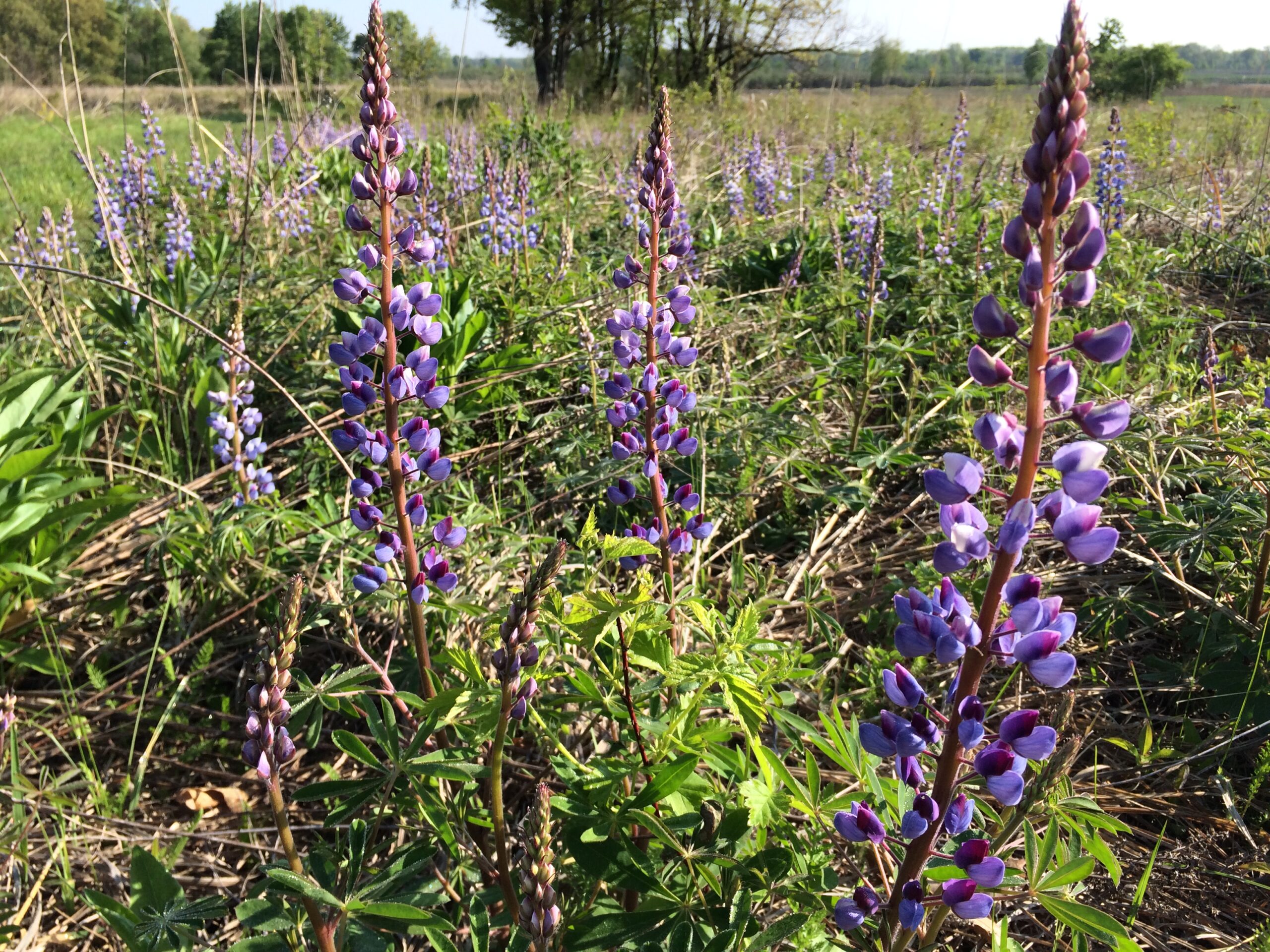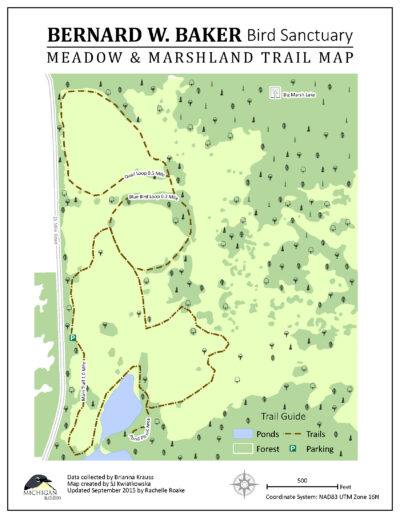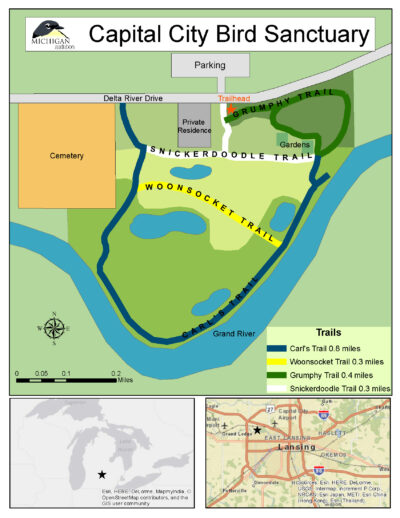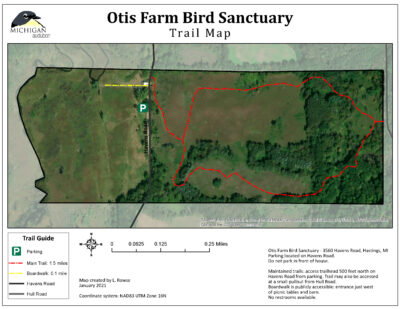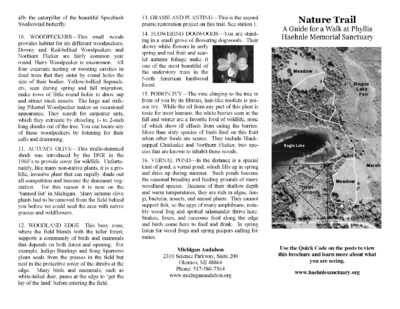Spring brings warmth, growth, longer days, and a chorus of sounds. At Michigan Audubon’s signature sanctuaries, you might find pairs of Wood Ducks investigating cavity holes high up in trees, Tree Swallows or Eastern Bluebirds claiming nest boxes, spring peepers and other frogs loudly proclaiming their presence, and blooming wildflowers in a variety of habitats. Let’s take a look at what you might observe this spring at our four signature sanctuaries.
Our signature sanctuaries are open to the public all year from dawn to dusk.
Bernard W. Baker Sanctuary
Location: 21145 15 Mile Rd, Bellevue, MI 49021
Parking is available at the Meadows and Marshland Trailhead on the east side of 15 Mile Rd.
No restrooms.
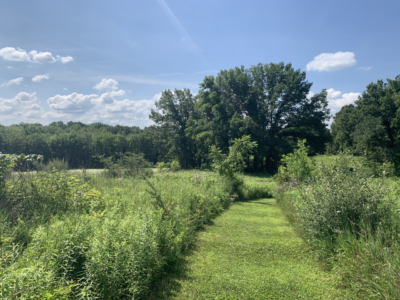
Habitat restoration
In the recently restored oak savanna habitat, open meadows include a variety of native wildflowers. Two fields at the Meadows and Marshland Trailhead were mowed and interseeded with a wildflower mix to increase diversity in winter 2020. Extensive autumn olive patches were removed (though there is much more to be removed still). Plans are underway to reintroduce prescribed fire to this landscape — improving nesting habitat, helping to maintain the health and function of the upland grasslands, and reducing invasive species.
Trail conditions
Trails are mowed grass with rolling hills. There are benches along the trails for rest stops or to sit and observe the natural world around you.
Upcoming volunteer days
- April 19, 9 a.m.–12 p.m.: Nest box monitor training
- April 29, 9 a.m.–12 p.m.: Native garden prep and trail work
- May 17, 9:30 a.m.–12 p.m.: Community science bird monitoring — Learn how to use eBird
- May 20, 9 a.m.–12 p.m.: Garlic mustard pull
- June 15, 9 a.m.–12 p.m.: Native garden planting
eBird Hotspot
Enter your observations into the eBird hotspot for Bernard W. Baker Sanctuary while you’re birding to increase awareness of what is seen and contribute to community science!
updated May 5, 2021
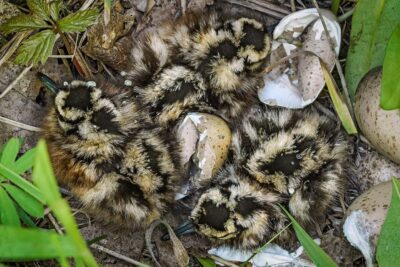
American Woodcock at Bernard W. Baker Sanctuary. Photo by Roy Van Loo, Jr.
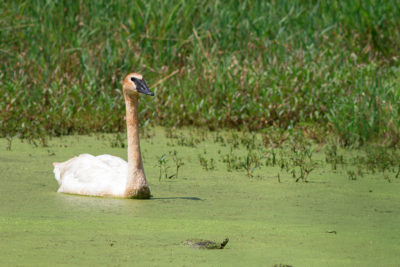
Trumpeter Swan with turtle at Bernard W. Baker Sanctuary. Photo by Jerry Engelman
Capital City Bird Sanctuary
Location: 6001 Delta River Dr., Lansing, MI 48906
Parking is available at Hawk Meadow Park at 6160 Delta River Dr.
Restrooms are available at Hawk Meadow Park.

Birds and other wildlife
Sandhill Cranes have returned to the sanctuary, as have many Tree Swallows, kinglets, Eastern Phoebes, and more. Northern Cardinals are pairing up, and males can be observed feeding tidbits to females as part of a pair-bonding strategy. Garter snakes may be observed in sunny areas, soaking up the warmth as they begin their spring activities.
Plant highlights
Visitors can find spring beauty, trout lily, mayapple, and bloodroot in the sanctuary. Visit our native plant garden to see the early spring growth of plants such as cup plant, mountain mint, and rattlesnake master!
Habitat restoration
Much of the ongoing habitat restoration at CCBS involves keeping invasive species in check, including Japanese barberry, multiflora rose, and autumn olive. In spring, volunteers pull many bagfuls of garlic mustard and dame’s rocket, two herbaceous invaders that produce many thousands of seeds per individual plant. With the seed bank, it’s an ongoing project each year to prevent further seed production and the spread of these invasive plants.
Trail conditions
Trails are packed dirt or mowed grass. There is flooding across the trail in the meadow. Boardwalks help hikers cross muddy or flooded areas along the river trail.
Upcoming volunteer days
- Wednesday Workdays, April through October, 9 a.m.–12 p.m.*
- April 22, 4:30 p.m.–6:30 p.m.: Earth Day cleanup
- June 9, 9 a.m.–12 p.m.: Invasive species informational session with free boot brush picks (while supplies last) & invasive species pull
*No volunteer sessions will be held on May 5 or 26.
eBird Hotspot
Enter your observations into the eBird hotspot for Capital City Bird Sanctuary while you’re birding to increase awareness of what is seen and contribute to community science!
updated May 5, 2021
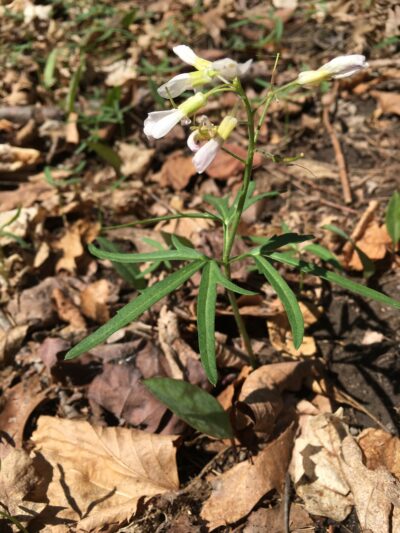
Cut-leaved toothwort at Capital City Bird Sanctuary. Photo by Linnea Rowse
Otis Farm Bird Sanctuary
Location: 3560 Havens Rd., Hastings, MI 49058
A parking area is accessible from spring until fall, depending on ground conditions.
No restrooms are available.
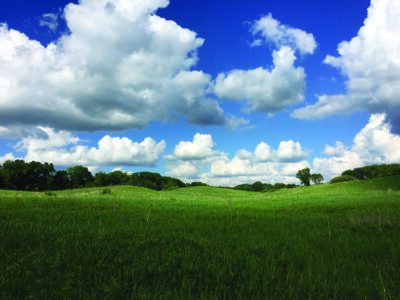
Birds and other wildlife
Sedge Wren, Tree Swallow, Eastern Kingbird, Acadian Flycatcher, Blue-winged Warbler, Field Sparrow, and more species that flourish in grasslands and adjoining forested habitat can be observed at Otis.
Plant highlights
Mayapple, spring beauty, marsh marigold, hepatica, and other forest floor ephemerals are spotted in this sanctuary.
Habitat restoration
In the past couple of years, the upland native grasslands have been restored by removing non-native trees (e.g., scotch pine windrow), tilling and re-seeding fields with native warm-season grasses and wildflowers, and planting oak seedlings to regenerate oak savanna. Lots of invasive multiflora rose and autumn olive plants have been removed, improving the habitat for birds, pollinators, and native plants (which have a hard time competing against the aggressive growth of invasive shrubs). The fen wetland on the west side of Otis also has had a lot of work put into controlling invasive reed canary grass and purple loosestrife. It is home to the federally threatened Eastern massasauga rattlesnake.
Trail and parking conditions
Trails are mowed grass with rolling hills. The parking area may be wet following spring rains; use caution and follow all signage should the parking area be temporarily restricted due to soggy ground (to avoid vehicles becoming stuck).
Upcoming volunteer days
- April 17, 9 a.m.–12 p.m.: Invasive species control
- May 1, 9 a.m.–12 p.m.: Picnic area install and native garden prep
- May 5, 9 a.m.–12 p.m.: Nature play area install
- May 12, 9 a.m.–12 p.m.: Native garden prep
- May 15, 9 a.m.–12 p.m.: Wildflower planting
- May 19, 7 a.m.–10 a.m.: Seasonal bird survey monitoring
- June 2, 9 a.m.–12 p.m.: Garlic mustard pull
- June 12, 9 a.m.–12 p.m.: Native garden prep/trail work
eBird Hotspot
Enter your observations into the eBird hotspot for Otis Farm Bird Sanctuary while you’re birding to increase awareness of what is seen and contribute to community science!
updated May 5, 2021
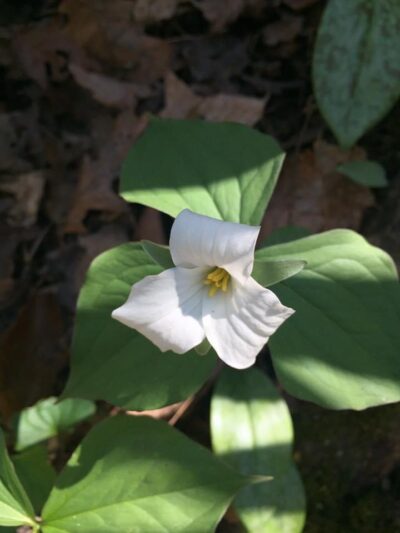
Trillium at Otis Farm Bird Sanctuary. Photo by Sarah Nelson
Phyllis Haehnle Memorial Sanctuary
Location: GPS coordinates of 42.322, -84.289 (You can also plug in the address of 8746 Seymour Rd, Grass Lake, MI 49259, noting that address is a house west of the sanctuary.)
Parking is available at the Seymour Road entrance.
No restrooms are available.
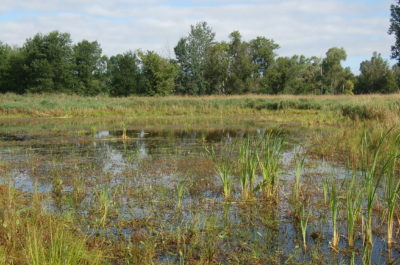
Birds and other wildlife
Although best known for its fall Sandhill Crane migration, Haehnle offers many bird highlights throughout the year. Spring brings the return of secretive birds such as American and Least Bittern, Sora, and Wilson’s Snipe. It is also a great time to observe amphibians including striped chorus, wood, and Northern leopard frogs, spring peepers, and American toads.
Plant highlights
Visitors may see trillium, mayapple, jack in the pulpit, wild geranium, and more here. Grassland wildflowers tend to bloom in late spring through the summer, whereas wildflowers in the wooded areas tend to bloom earlier.
Habitat restoration
From the seating area atop the hill by the main parking area and kiosk (enter from Seymour Road), look north and you’ll see a significant work in progress. If you visited Haehnle Sanctuary more than two years ago, you might remember a wall of green: We have been steadily working to remove highly invasive glossy buckthorn from this area. More than 20 acres have been removed thus far to restore the natural water regime in fen wetland habitat. Where once there was buckthorn, there are now native plants thriving! Work is also in progress to improve pollinator habitat at the sanctuary by converting an old agricultural field into native wildflowers and native grasses.
Trail conditions
Trails are mowed grass or packed dirt. There may be some muddy or wet areas, some with recently added boardwalks.
Upcoming volunteer days
Weekly volunteer work crew: Contact Gary Siegrist for more information, at [email protected].
Projects may include trail creation, fence and parking lot maintenance, bench building, and more.
eBird Hotspot
Enter your observations into the eBird hotspot for Phyllis Haehnle Memorial Sanctuary while you’re birding to increase awareness of what is seen and contribute to community science!
updated May 5, 2021
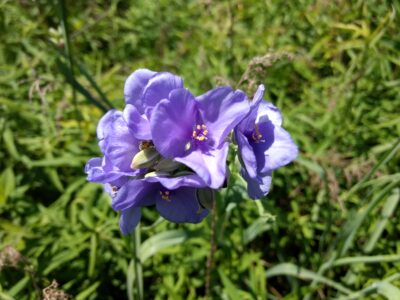
Spiderwort at Phyllis Haehnle Memorial Sanctuary. Photo by Allen King
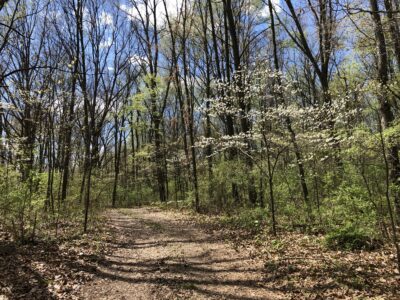
Flowering dogwood at Phyllis Haehnle Memorial Sanctuary. Photo by Steve Jerant
We hope you can make it out to one of the Michigan Audubon sanctuaries this spring!
Featured photo: Lupine at Phyllis Haehnle Memorial Sanctuary.

